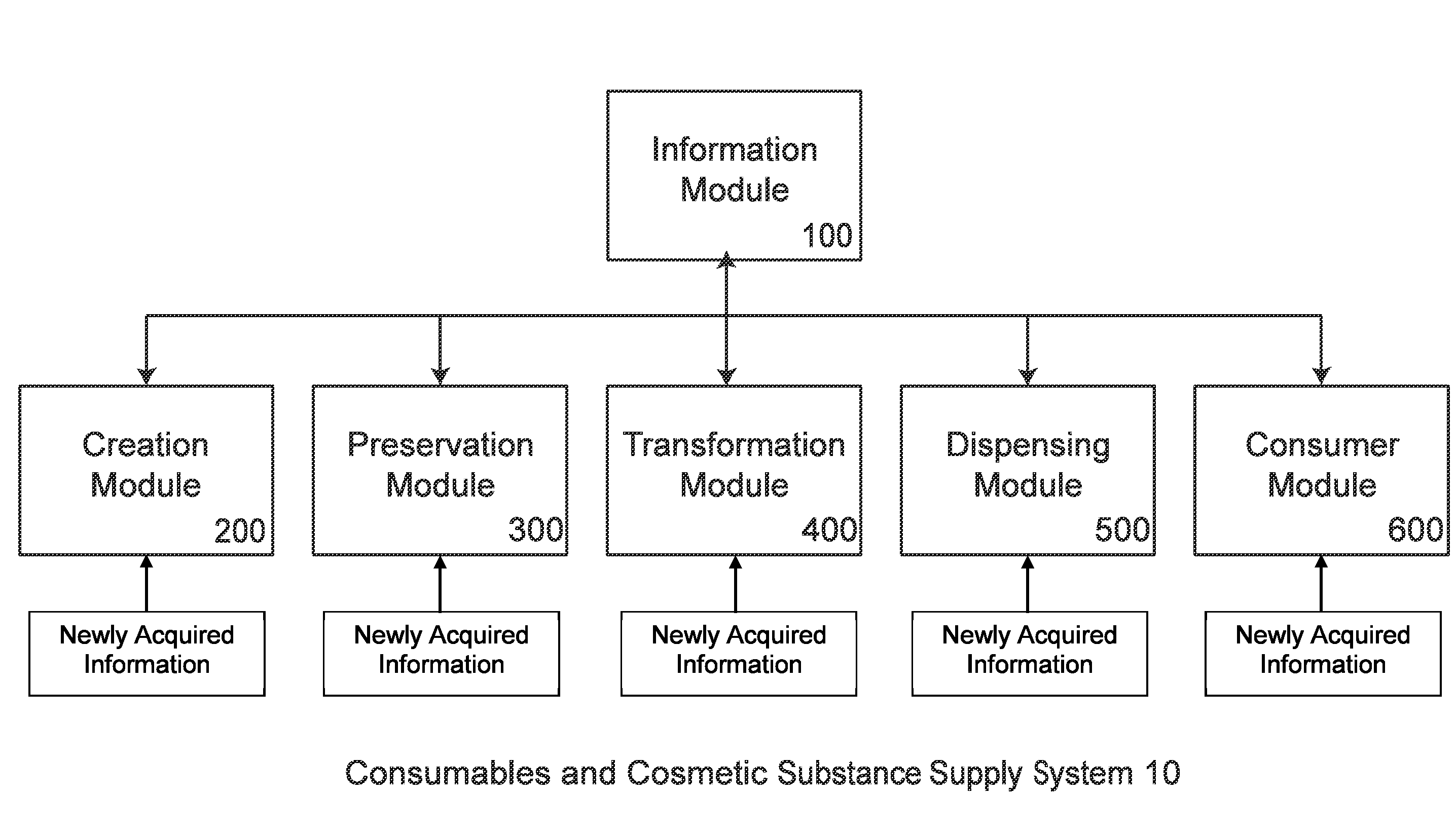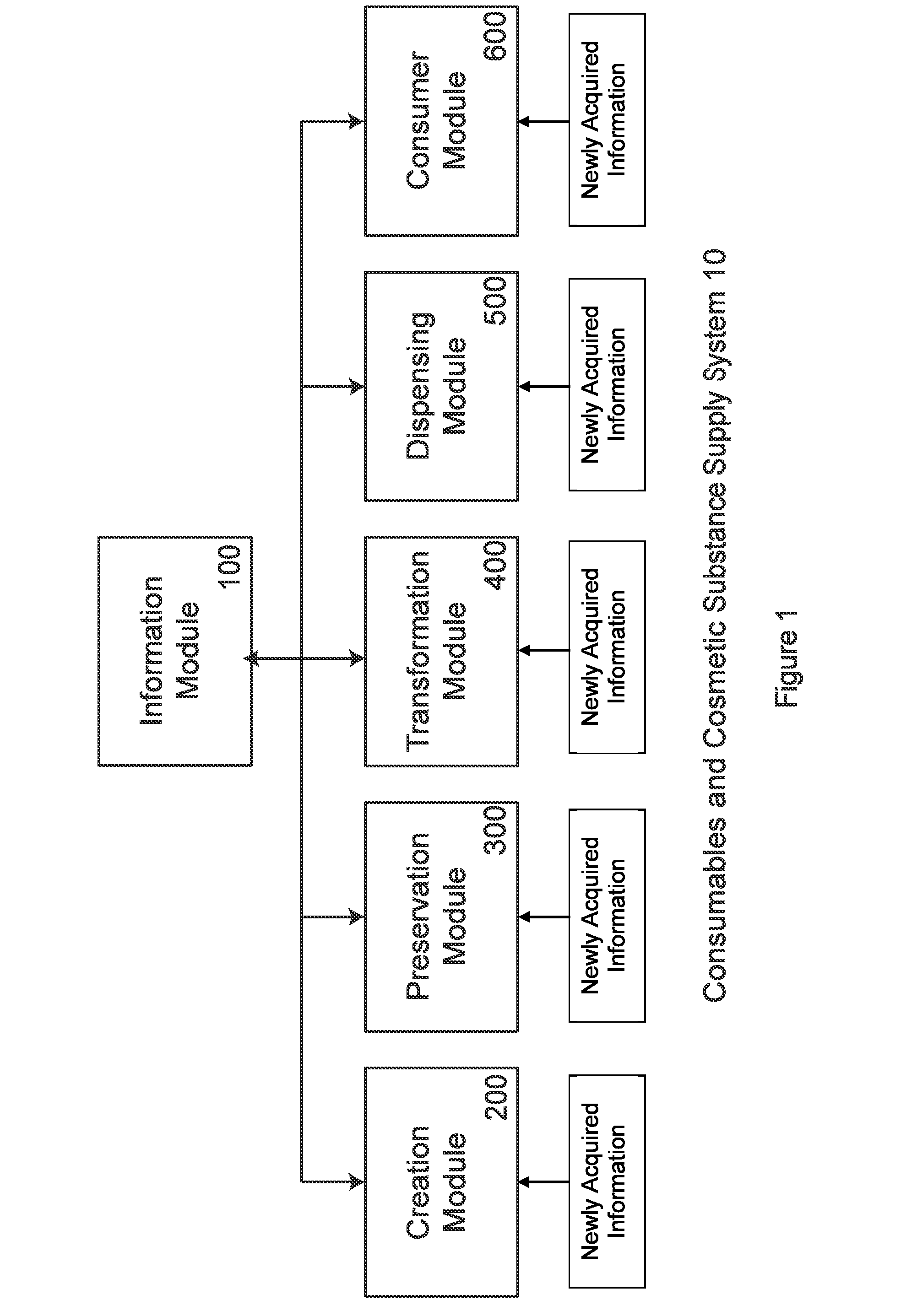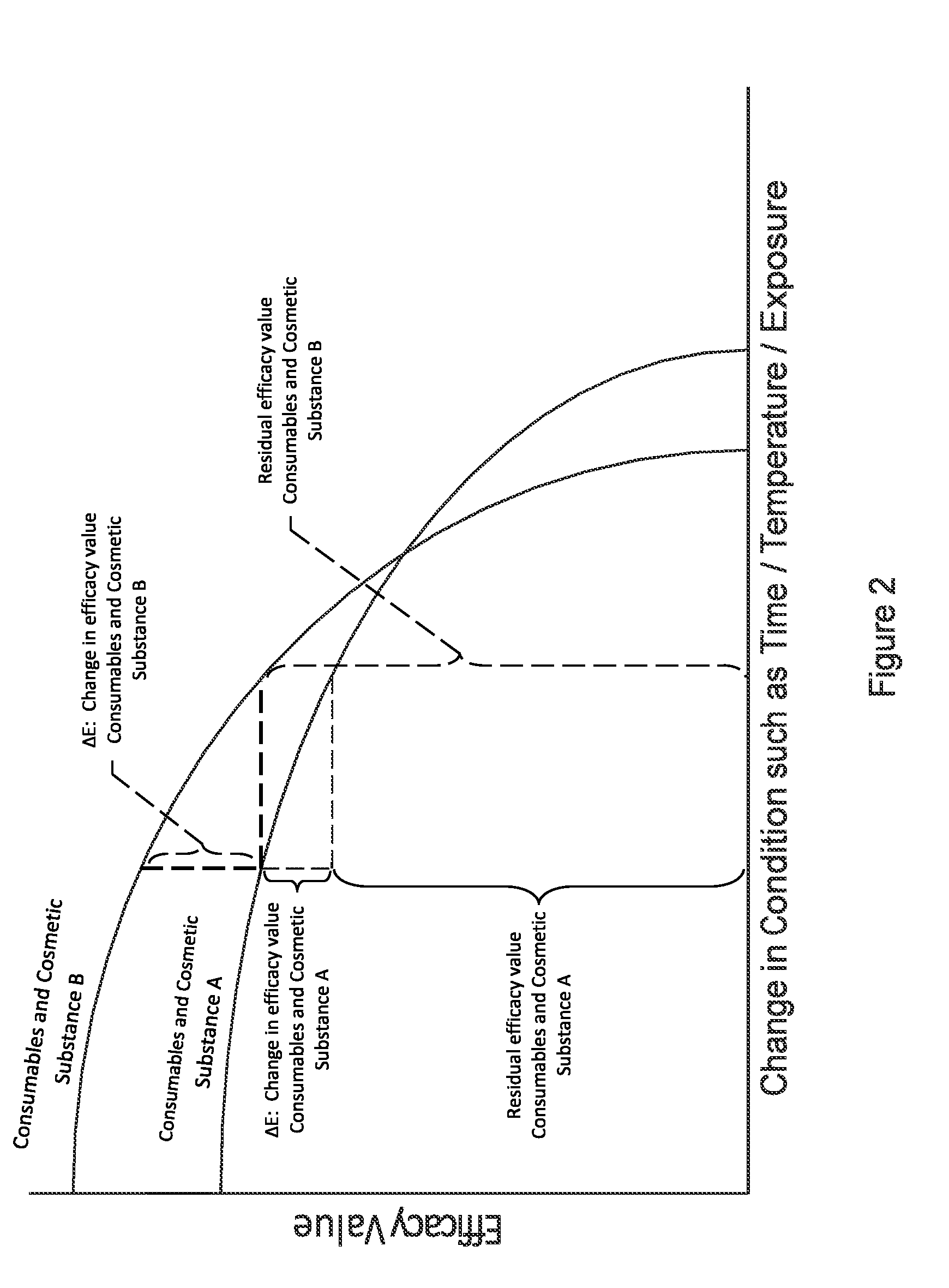While the collectors and creators of consumables and cosmetic substances generally obtain and / or generate information about the source, history, and
active ingredient content of their products, they generally do not pass such information along to the users of their products.
There is generally no
consumer access to, and little
traceability of, information regarding the creation and / or origin, preservation,
processing, preparation, dispensing, or local storage of consumables and cosmetic substances.
Further, there is no information available to consumers as to the evolution of a consumables and cosmetic substance's
efficacy.
While the consumables and cosmetic substances supply system has endeavored to increase the efficacy value of the consumables and cosmetic substances it produces, it has not provided a means of tracking the evolution of consumables and cosmetic substances efficacy value in a manner that makes information regarding the evolution available, useful, or responsive to consumers.
While there has recently been greater attention by
consumer organizations, health organizations and the public to the efficacy value of consumables and cosmetic substances, the consumables and cosmetic substance industry has been slow in responding to this attention.
One reason for this may be that since the consumables and cosmetic substance industry operates as silos of those who create consumables and cosmetic substances, those who preserve and transport consumables and cosmetic substances, those who transform consumables and cosmetic substances, and those who finally prepare the consumables and cosmetic substances for use by the
consumer, there has been no system wide coordination or management of efficacy value, and no practical way for creators, preservers, transformers, dispensers, and consumers to update labeling content for consumables and cosmetic substances.
While each of these
silo industries may be able to maintain or increase the efficacy value of the consumables and cosmetic substances they
handle, each
silo industry has only limited information and control of the consumables and cosmetic substances they receive, and the consumables and cosmetic substances they pass along, and the limited information in their control provides little utility beyond tracking product inventory and predetermined expiration dates.
Further, if communicated, such changes to labeling content could affect the health, safety, and wellbeing of the consumer.
However, the
transformer of the skin lotion, in the prior example, has very little information to share other than possibly the source of the ingredients of the skin lotion and its
processing steps in manufacturing the skin lotion.
The
transformer of the skin lotion does not know the efficacy value of the product after it has been locally stored and is ready for dispensing by the consumer, cannot predict changes to the efficacy value, and cannot inform a consumer of this information to enable the consumer to better meet their needs.
For example, in the pharmaceutical supply chain, much of the product is wasted due to safety margins included in static product expiration dates.
Unfortunately, today there is no such system or dynamic consumables and cosmetic substance labeling.
While consumers, and all those who process, sell, and dispense consumables and cosmetic substances may obtain some information from current consumables and cosmetic substance tracking systems, such as labels, these current systems can provide only limited information.
Consumables and cosmetic substance collectors and / or producers, such as growers (plants), ranchers (animals) or synthesizer (synthetic compounds), routinely create and collect information about their products, however, that information is generally not accessible by their customers.
Even if such producers wished to provide such information to their customers, there is no current method of labeling, encoding or identifying each particular product to provide such information (even though all plants, animals and in general, consumables and cosmetic substances have a natural
fingerprint).
While there are limited methods and systems available, they are excessively costly,
time consuming, and do not trace, or provide access to, the consumables and cosmetic substance efficacy state across the product's lifecycle.
An important issue in the creation, preservation, transformation, dispensing, and consumption of consumables and cosmetic substances are the changes that occur in consumables and cosmetic substances due to a variety of internal and external factors.
Because consumables and cosmetic substances are composed of biological, organic, and / or chemical compounds, they are generally subject to degradation.
This degradation generally reduces the efficacy values of consumables and cosmetic substances.
While these consumables and cosmetic transformers have some knowledge of the consumables and cosmetic substance ingredients they purchase, and make such selections to meet the needs of the consumers of their products, they generally do not transmit that information along to the consumers, nor change the way they transform the consumables and cosmetic substances based on the history or current condition of the consumables and cosmetic substances they receive for transformation.
However, the consumer has no way of knowing the history or current condition of the consumables and cosmetic substances they have obtained, particularly as it relates to efficacy values, at the time they obtain it, during the time it is locally stored by the consumer, or at the time it is dispensed for consumption.
Further, consumers have no way to change the way they locally store, dispense and consume the consumables and cosmetic substances based on the history or current condition of the consumables and cosmetic substances.
 Login to View More
Login to View More  Login to View More
Login to View More 


